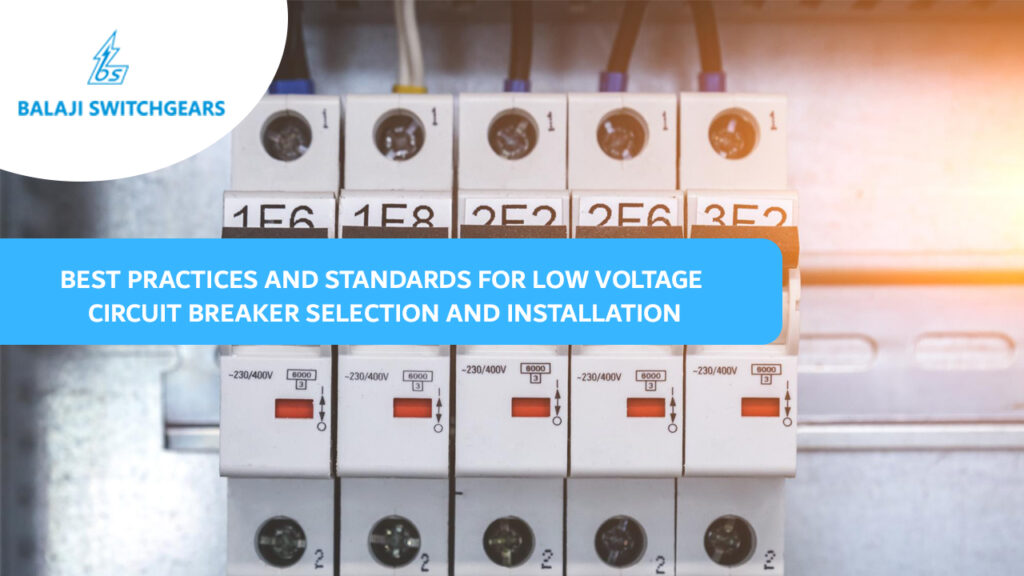Introduction
Circuit breakers are an essential part of any electrical installation, providing safety and protection for both equipment and personnel. When it comes to low voltage circuit breakers, selecting the right one and installing it correctly is crucial. This blog post will guide you through the best practices and standards for low voltage circuit breaker selection and installation.
Selection of Low Voltage Circuit Breakers
Understand Your Requirements
The first step in selecting a low voltage circuit breaker is understanding your specific requirements. This includes the maximum current that the circuit will carry, the voltage rating of the circuit, and the type of load (resistive, inductive, or capacitive).
Consider the Breaking Capacity
The breaking capacity of a circuit breaker is the maximum current that it can interrupt without causing damage. It’s important to choose a circuit breaker with a breaking capacity higher than the prospective short-circuit current of the circuit.

Check the Rated Operational Voltage
The rated operational voltage of a circuit breaker should be equal to or higher than the circuit voltage. Using a circuit breaker with a lower rated operational voltage can lead to premature wear and potential failure.
Select the Appropriate Type
Circuit breakers come in different types, including miniature circuit breakers (MCBs), molded case circuit breakers (MCCBs), and air circuit breakers (ACBs). The choice depends on the application and the level of protection required.
Installation of Low Voltage Circuit Breakers
Follow the Manufacturer’s Instructions
Always follow the manufacturer’s instructions when installing a circuit breaker. These instructions provide detailed steps on how to safely and correctly install the circuit breaker.

Ensure Proper Mounting
Circuit breakers should be securely mounted to prevent movement, which could lead to loose connections and potential arcing. The mounting surface should be flat and free of any debris.
Check the Wiring
Ensure that the wiring is done correctly and securely. Loose connections can lead to arcing and potential fire hazards. Also, the wire size should be appropriate for the current rating of the circuit breaker.
Test the Circuit Breaker
After installation, it’s important to test the circuit breaker to ensure it’s working correctly. This can be done by simulating a fault condition and checking if the circuit breaker trips as expected.
Adherence to Standards
Adherence to standards is crucial when dealing with electrical installations. Standards such as IEC 60947-2 for low-voltage switchgear and control gear, provide guidelines on the design, manufacture, and testing of low voltage circuit breakers. These standards ensure the safety and reliability of the circuit breakers.
Conclusion
Selecting and installing low voltage circuit breakers is a task that requires careful consideration and adherence to standards. By understanding your requirements, choosing the right type of circuit breaker, and following best practices during installation, you can ensure the safety and efficiency of your electrical installation.
Remember, when dealing with electrical installations, safety should always be the top priority. Always consult with a qualified electrician or electrical engineer if you’re unsure about any aspect of circuit breaker selection or installation.


Your blog posts consistently deliver valuable insights and practical strategies for living a more meaningful, fulfilling, and purposeful life.
Its like you read my mind! You appear to know so much about this, like you wrote the book in it or something. I think that you can do with a few pics to drive the message home a little bit, but other than that, this is fantastic blog. A great read. I’ll certainly be back.